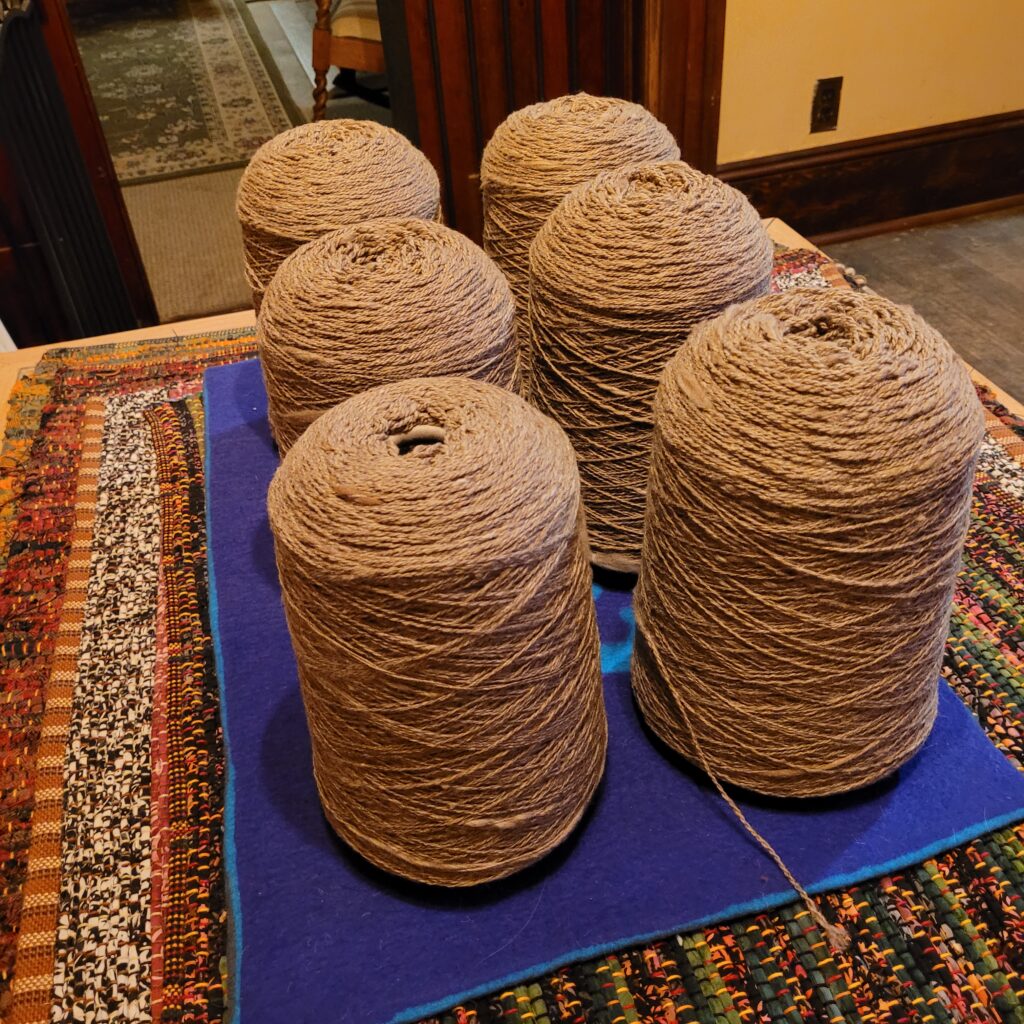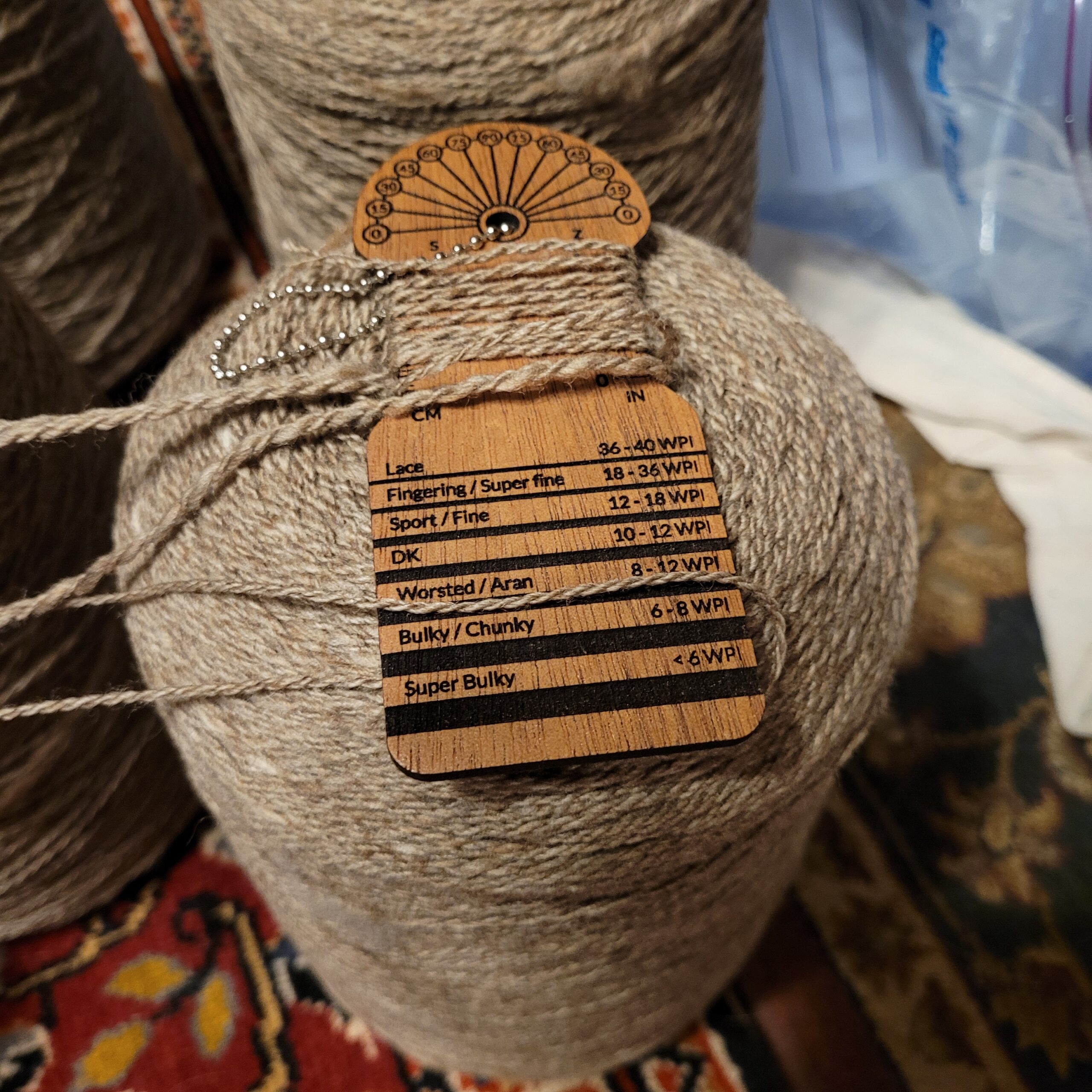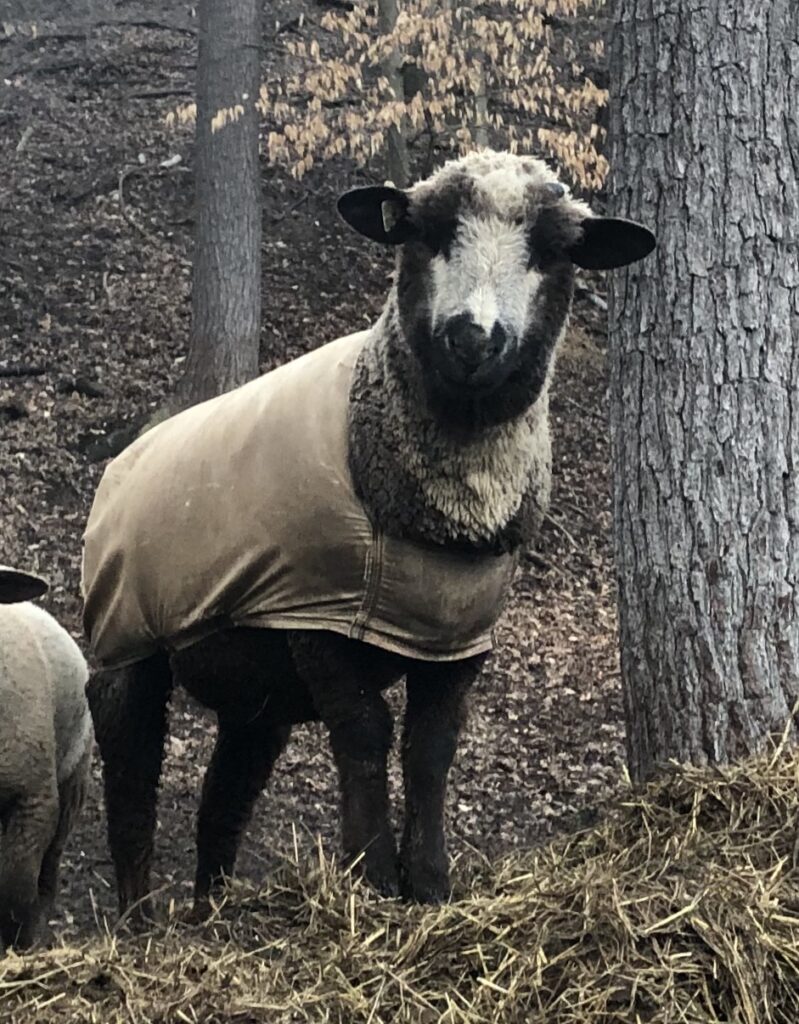Have you ever wondered about getting a custom yarn made for your textile endeavours? Hand-processing sheep fleece is a lot of work. In fact, as one spinning teacher used to say, “The Industrial Revolution happened for a reason!” Victoria-based weaver Bobbie Williams brings us another informative article, this time explaining the steps she took to have raw fleeces, purchased directly from a sheep farmer, turned into yarn at one of BC’s fibre processing mills.
by Bobbie Williams
I am a spinner and a weaver who is interested in working with single-breed wools, creating rugs and blankets. I decided two years ago that I wanted to also create cloth out of a single breed and wanted to start as much as possible “from scratch”. Given my personal circumstances, that means purchasing fleeces.
I had 7 CVM/Romeldale fleeces that I purchased over a two-year period from a farmer in the US (yes, I know there are CVM/Romeldale farmers in BC, but I have history with this Pennsylvania farmer….). CVM/Romeldale sheep are a fine wool breed, considered endangered/rare and part of the Shave ‘Em to Save ‘Em Program through The Livestock Conservancy in the US. Micron count tends to be 20 – 25 microns, staple typically 3-4 inches. I have processed CVM/Romeldale fleeces myself, but decided this time I would have a mill tackle them.
I sent the fleeces to Nicole at That Darn Yarn Shop & Fibre Mill in Kamloops in 2023, and asked her to blend, scour, card, pin-draft, spin and ply suitable for weaving yardage and/or blankets. I also asked that the yarn be left on cones (when yarn is left on cones it still has the spinning oils in it, which is helpful for weaving).

The photos show what I received. Six cones for a total of 8400 grams, 12,600+ metres. The yarn is 2-ply. Using my scale, Ashford Skein Winder (with counter), and one of those nifty little tools that allow for an estimate of yarn size and WPI, I did some number crunching.
There is some inconsistency in my measurements comparing yardage (or in my case, metres to grams) and WPI, so my final “numbers” are estimates. Metres to grams suggests the yarn falls in the 150/160 metres to 100 grams size, which is finer than Bulky but heavier than Worsted. Using the WPI tool, I arrived at 10 WPI and yarn that fell into the Worsted/Aran size (8 – 12 WPI). This makes the yarn perfect for blankets and outerwear yardage.

For those who are curious, the cost of the mill processing (not including the purchase cost of the fleeces) was $1600 (of which approximately $700 was the tumbling, scouring and picking cost) — $20 per 100 grams. When you add in the initial cost of the fleeces and shipping to/from the farmer and the mill, the cost becomes $26 to 100 grams. [Remember, I was dealing with initial shipping from a US farm. If my fleeces had some from farms within the Fibreshed, I would have been working with Canadian shipping only.]
When making a decision about commercial processing of wool, the final intended use is important. Each step of the preparation has a cost associated with it. For example, if I wanted to spin the wool myself, I would have asked for pin-drafted roving. That would have saved me $2.64 per 100 grams. But I wanted this yarn to be a blend of seven fleeces (all slightly different colours) and spun to a certain twist and weight. I also wanted the yarn to be worsted or semi-worsted.
That Darn Yarn Shop and Fibre Mill has a page on their website that explains the steps of the processing. From conversations with Nicole, it was obvious that the cleaner the fleeces were when sent to her, the less involved the scouring process which would impact the cost of that step. Cleaner wool also lends itself to better quality yarn. [Nicole said these fleeces were very clean – information I have passed on to the farmer.]
Which brings us to the final question? Was the cost (more than $3000 when everything was included) and time associated with this activity worth it? From the moment I started collecting the fleeces, to the receipt of the yarn, over two years had passed. So why do this, rather than purchase yarn at a local store? Frankly, CVM/Romeldale is one of those breeds that I have not encountered in a yarn store, although it is available on-line as limited release yarns. I normally spin my own yarn, working on a fleece at a time. But if I wanted to weave blankets and yardage, I would need a lot of yarn, much more than what I could spin from a single fleece. Sending the fleeces to a mill made sense and, frankly, I was curious to see how well the mill would blend and process them in accordance with my request. But another important consideration for me was that I know this farmer, and I have supported her for several years, listening to her online stories of the challenges of farming and preservation of a breed. And the mill is one of only two mills currently in British Columbia, and supporting “local” business is important. It will probably take me several years to weave all this yarn, but with each toss of the shuttle, I will think of the farmer, the sheep, and the mill operator.

As an end note – just after I received the yarn and let the farmer know about it, she told me that one of my favorite ewes – Amtrak – had just died. Amtrak was my introduction to CVM/Romeldale, and two of her fleeces are in this yarn. Amtrak, I will think of you for years to come!
If readers are interested in local CVM/Romeldale wool, do a search through the Fibreshed’s Producers Directory. For information about the breed itself, follow this link: https://livestockconservancy.org/romeldale-cvm-sheep/
